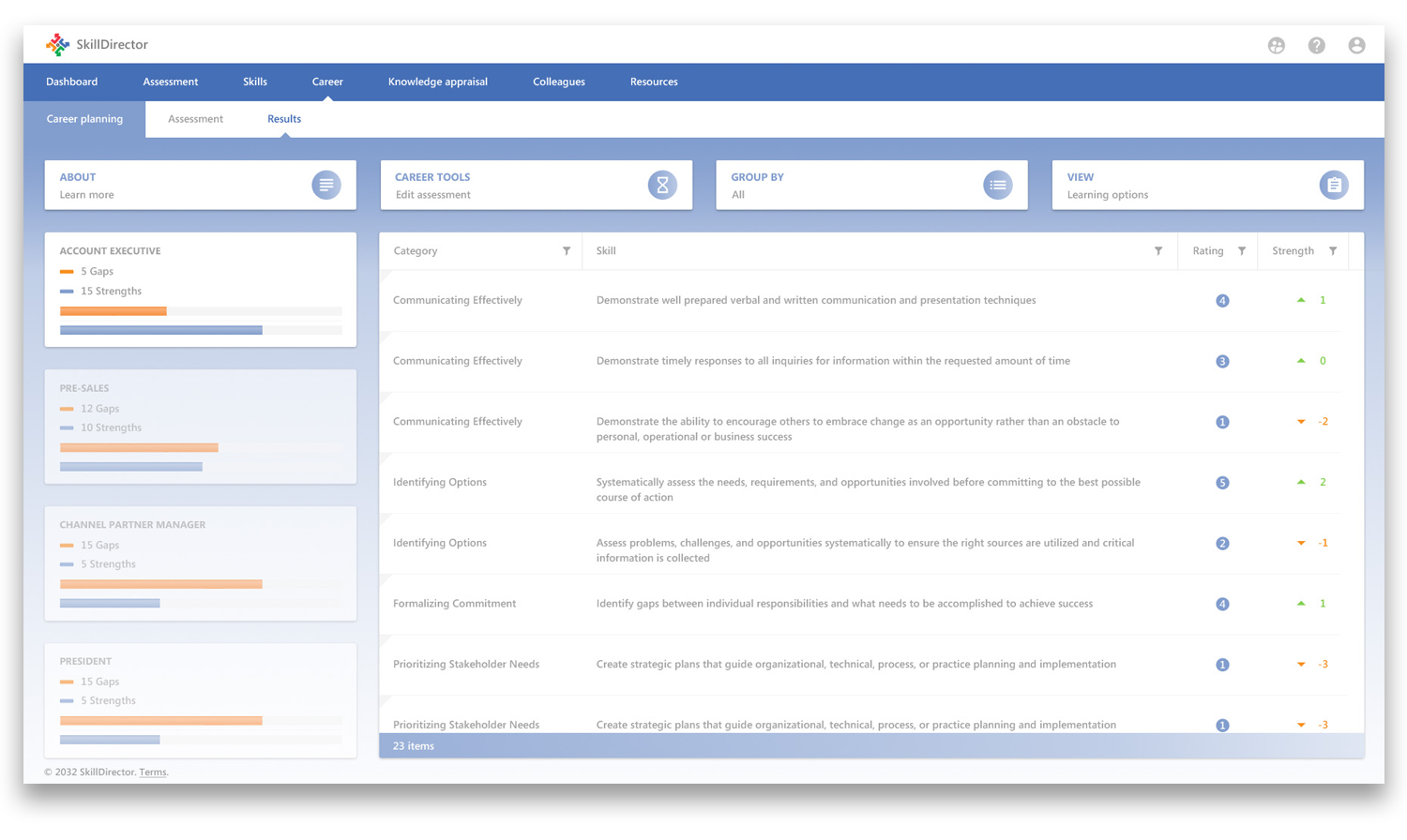People crave mastery
(20 second video snippet - from Daniel Pink: "Drive")
Expectations drive intrinsic motivation to mastery
A role-specific competency model provides a picture of what great looks like. It communicates the required skills, and more importantly what the behaviors look like at each level of proficiency. It is those behaviors that drive self-awareness. And that drives action. When employees don’t know what it takes to be great at their job, they will maintain the status quo. Grow or die.
“Developing your employees’ skills at a rate equivalent to the rate of changes is the key to a sustainable competitive advantage. We need people who have the latest skills and who build new ones quickly”
– The Expertise Economy
No Competency Model is a strategy gap
Competency models identify what the organization needs people in a particular role to do in order for the organization to succeed and create competitive advantage.
If you don’t know what people need to be able to do, how can you be sure you can execute strategy? If they don’t know what they should do, how can they hold up their end?
According to an ATD survey on Bridging the Skill Gaps, 75% say that the skills gap affects their organization’s service delivery, customers, or future growth.
Not only do you need role-based competency models, but you need to be sure they change. 52% believe their skills gap exists because the abilities of the current workforce do not match changes in company strategy, goals, markets, or business models.
Organizational competencies are not enough
Many companies think their organizational competencies are sufficient for success. Somehow, they believe that if people are good at things like collaboration, customer focus, and communicating with passion that they are going to be able to do the job they were hired to do. How does that help your financial analysts learn new techniques for data visualization, IT personnel learn the next technology, or salespeople deliver insights about their industry? How does that help them grow into their next role?
Role-based competency models support the entire employee lifecycle
The role of Talent, Learning & Development is to ensure that people in the organization have the ability to do their job and grow into other roles.
With role-based competency models:
- You have better workforce planning – Read blog post
- You recruit better – Read blog post
- You onboard faster – Read blog post
- You close skill gaps in role – Read blog post
- You empower career planning – Read blog post
- Managers coach more effectively – Read blog post
- You can focus on critical skills, such as innovation – Read blog post
WITHOUT role-based competency models, bad things happen
- You have no organizational agility – Read blog post
- You create learning that doesn’t transfer – Read blog post
- You create learning that’s not relevant – Read blog post
- You make everyone in a role sit through the same training programs, even when they don’t need it
- You alienate frustrated employees who can’t do their jobs and they leave – Read blog post
Competency Models Are Easy
Did you know there are 3 simple ways to get a competency model?








